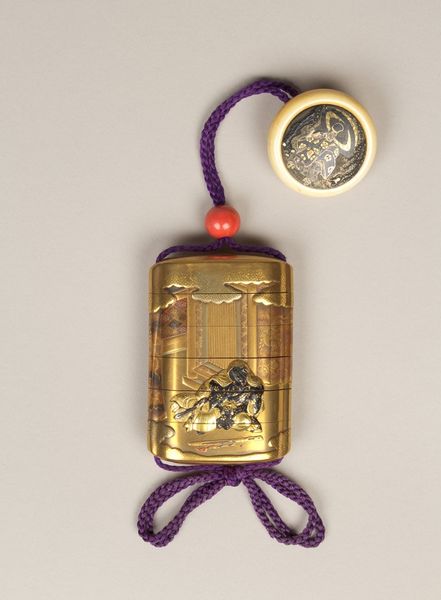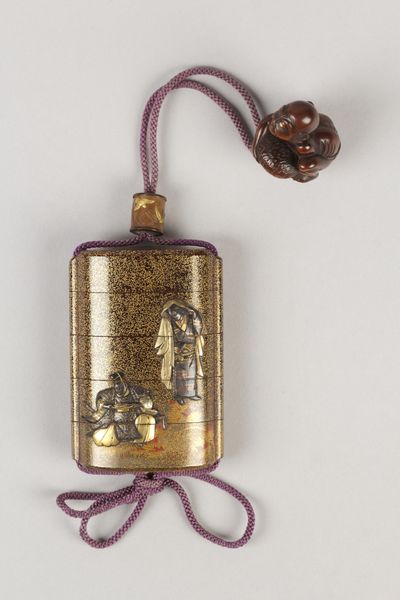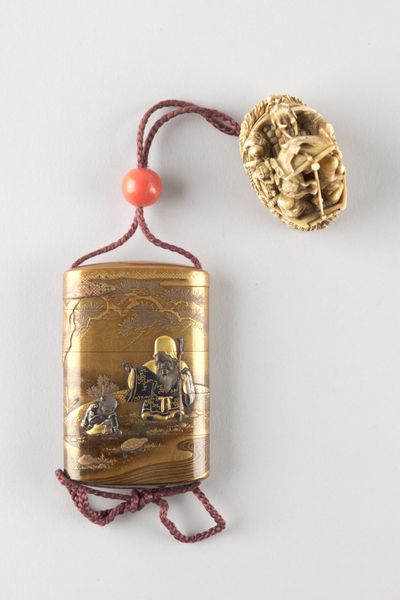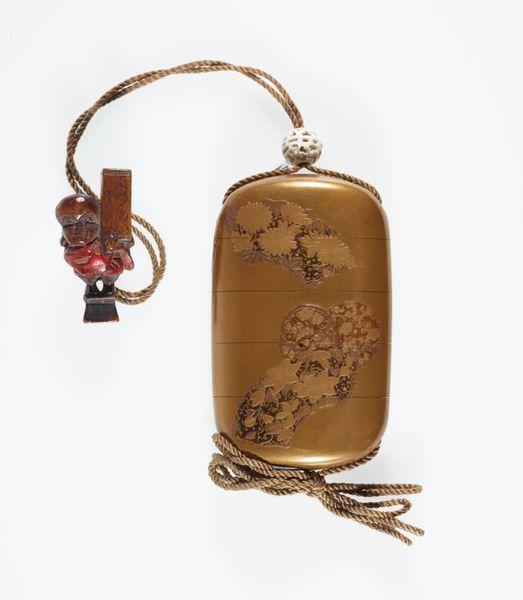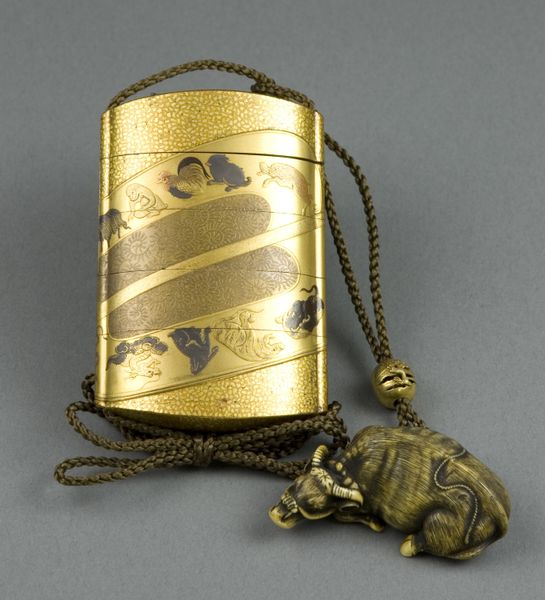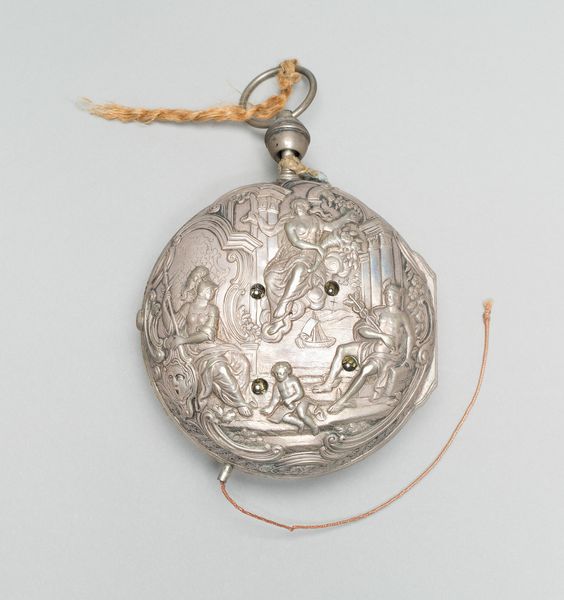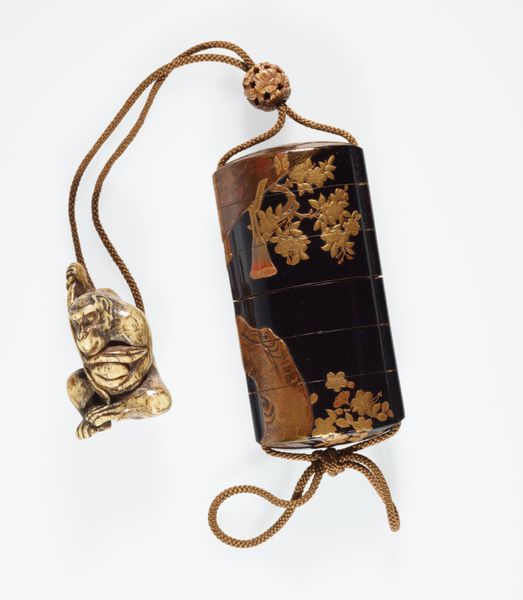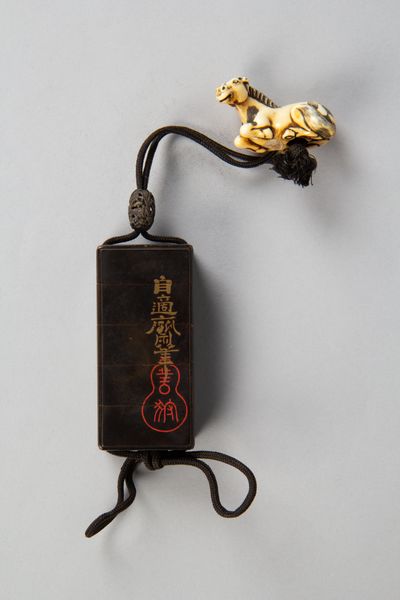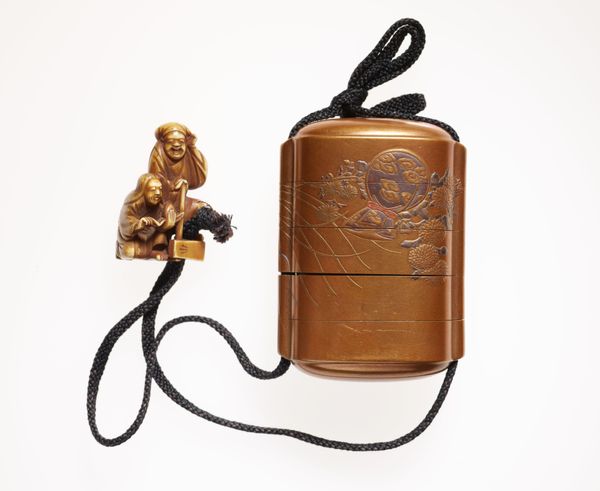
Five-case inro with decor of bushclover and butterflies c. mid 19th century
0:00
0:00
wood
#
asian-art
#
japan
#
wood
#
decorative-art
Copyright: Public Domain
Tatsuke Takamasu created this five-case inro with decor of bushclover and butterflies during the Edo period in Japan. Inro were traditionally used to carry personal seals or medicines, reflecting both status and practicality. Consider how the inro and its design elements play into the cultural context of the time. Bushclover and butterflies are recurring motifs in Japanese art, often symbolizing autumn and transformation. During the Edo period, Japan saw a rise in merchant class affluence, which led to increased demand for luxury goods. The detailed lacquer work speaks to the refined tastes of its intended audience, while the compact size suggests a life of mobility within certain social circles. The inro is more than a container; it embodies identity, status, and the transient beauty of life. The inro offers a glimpse into the personal and cultural values of the Edo period.
Comments
No comments
Be the first to comment and join the conversation on the ultimate creative platform.

